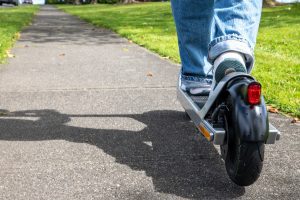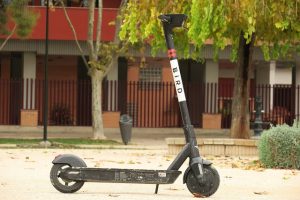As parents, educators, and caregivers, we’re always on the lookout for fun and effective ways to boost our children’s cognitive development. Believe it or not, something as simple as riding a scooter can play a significant role in your child’s cognitive development, and at FamilyHype, we’re here to remind you of that.
Not only is a scooter an excellent way to facilitate physical exercise, but it also helps to enhance motor skills, spatial awareness, and even social interaction. Plus, it’s a great opportunity to teach our little ones about road safety.

So, are you ready to jump on board and choose the right scooter for your child? We promise it’s not only safe but also a thrilling ride toward better learning. Visit us as we delve deeper into the advantages of using a scooter and how it can benefit your child’s cognitive development.
From the variety of designs to the various speeds and sizes, let’s make learning an adventurous journey that our children look forward to every day. Share your experience with us and discover how scootering can engage their minds and bodies, from the front part of the scooter to the paved road and beyond.
Key Takeaways
- Scooting on a scooter can boost a child’s cognitive development.
- Scooters facilitate physical exercise and enhance motor skills, spatial awareness, and social interaction.
- Scooting is a fun way to learn about road safety and promotes independence, decision-making, and problem-solving skills.
- Choosing the right scooter involves considering age, abilities, and interests, as well as safety factors such as weight capacity and handlebar height.
Learning The Basics Of Cognitive Development
Before we dive into the fun part, let’s first get a grip on what’s really going on upstairs – cognitive development, that is.
Cognitive development refers to how we perceive, think, and understand the world around us. It’s a critical part of our growth, happening in different development stages.
Cognitive theories, developed by brilliant minds like Piaget and Vygotsky, provide deep insights into this complex process. They suggest that our interactions with our surroundings and the experiences we accumulate significantly shape our cognitive abilities.
That’s where fun activities like scootering come in. Ensuring safety while engaging in such activities is essential.
Now that we’ve got the basics covered, let’s shift gears and explore the role of physical activity in cognitive development.
The Role Of Physical Activity In Cognitive Development
You might not realize it, but when you’re out getting your heart pumping through physical activities, you’re not just strengthening your muscles but also your brain! Indeed, physical activity plays an essential role in brain development. It’s not just about getting fit; it’s about sharpening your mind.
Exercise benefits us in countless ways, from enhancing memory to improving concentration and fostering creativity.
Engaging in physical activities is not just safe but also an effective way to stimulate cognitive development. It’s a fun and enjoyable strategy to keep our brains healthy and active. Plus, it’s a wonderful opportunity to be of service to others, encouraging them to join us in these beneficial activities.
Now, let’s explore how riding scooters can be a fun way to encourage physical activity and cognitive development.
How Scooters Encourage Physical Activity
There’s no denying it’s an absolute thrill to zip around on a scooter, feeling the wind in your hair as your heart rate increases, unknowingly promoting physical health and brain growth. Scooters encourage physical activity in a fun and exciting way, offering numerous benefits in the process.
Firstly, scooters provide a platform for healthy competition among children, fostering social interaction and team spirit.
Secondly, the necessity of scooter maintenance develops responsibility and problem-solving skills.
Lastly, the act of scooting itself is a great cardiovascular exercise, enhancing fitness levels and overall health.
Indeed, scooters are more than just a source of entertainment; they’re an interactive tool for learning and development.
Let’s now move on to exploring how scooters assist in boosting motor skills.
Boosting Motor Skills With Scooters
Imagine feeling the gentle tug of gravity as your child masterfully maneuvers their ride, each turn and stop refining their balance, coordination, and fine motor skills. Scooting around isn’t just fun; it’s a powerful tool for boosting motor skills.
The thrill of scooter customization offers kids the chance to experiment and refine their physical dexterity, while at the same time nurturing their creativity. With each ride, they’re not just getting from point A to B; they’re improving their balance and building confidence. Safety is paramount, so ensure they’re always geared up with a helmet and knee pads.
Scooting is more than just a physical activity; it’s a journey of self-discovery and development. Next, let’s explore how this fun mode of transport can help enhance spatial awareness in children.

Enhancing Spatial Awareness
Navigating through twists and turns on their favorite two-wheeled companion, kids naturally develop an intuitive understanding of their surroundings and space. This is more than mere play; it’s a crucial phase of their spatial awareness growth. Scooting around, they’re actually enhancing their perception development and balance improvement.
Just picture this: Little ones judge distances as they zip from point A to B. Kids learn about angles as they navigate corners. Young minds understand the concept of speed as they control their scooter. Their growing awareness of their surroundings promotes safety.
These aren’t just physical skills; they’re cognitive milestones that boost overall brain development.
Up next, let’s delve into how this newfound spatial awareness can promote independence and decision-making abilities in kids.
Encouraging Independence And Decision Making
Transitioning from spatial awareness, let’s now dive into another crucial benefit of using a scooter – encouraging independence and decision-making. Scooting around not only fosters self-reliance but also empowers children to make choices. As kids navigate their path, they’re faced with decisions like when to stop, which way to turn, or how to avoid obstacles. This encourages problem-solving as they learn to anticipate and react to different situations.
Moreover, the thrill of controlling their own journey boosts their confidence, further fostering independence. Ensuring they’re equipped with the necessary safety gear, we can provide a safe environment for them to explore their capabilities.
Next, we’ll delve into how scooting can help children learn about road safety, a key aspect of their cognitive development.
Learning About Road Safety
There’s no denying it – mastering the rules of the road while zipping around on their two-wheeled steeds can make a world of difference in your kids’ safety knowledge. As they navigate sidewalks, crosswalks, and driveways on their scooters, children can significantly boost their traffic rules comprehension.
They learn to recognize stop signs, traffic lights, and pedestrian rights, all while enjoying the fun ride. Besides, scootering reinforces the importance of wearing a helmet, protecting their heads and teaching them that safety should always be a priority. This is an invaluable lesson that extends beyond the road into every aspect of their lives.
This form of active learning not only contributes to road safety skills but also sets the stage for enhancing social skills and interaction. Encourage your child to scooter with friends or join scooter-related activities in your community. It’s a fantastic opportunity for them to practice proper social interactions and learn to share the paved road with others.
To ensure a safe ride, teach your child to inspect the scooter’s deck for a few cracks or damages before riding. Remind them to always maintain a proper stance, with both feet facing straight ahead and their weight evenly distributed. If they have a weak leg, encourage them to practice using it to strengthen their overall balance and coordination.
Lastly, it’s important to familiarize yourself with the scooter-related services available in your area. Check if there are any local laws or regulations regarding how to operate scooters, such as license requirements or designated scooter lanes. Understanding the specific rules and settings in your country or city will help ensure a smooth and safe scootering experience for your child.
Now that we’ve covered the importance of road safety and social skills let’s continue our journey by exploring how scootering can boost cognitive development and learning.
Enhancing Social Skills And Interaction
Believe it or not, your child’s social skills can drastically improve by simply taking part in activities that necessitate interaction and cooperation with others. Scooter riding is a fabulous way to promote peer interaction and emotional learning.
As your child rides with others, they learn to share space, communicate effectively, and understand the emotions of their peers. They gain a sense of belonging, learn to respect rules, and develop the ability to resolve conflicts. This interaction also opens up opportunities for them to learn about empathy and compassion, essential aspects of emotional learning.
It’s amazing how much a simple activity like scooter riding can contribute to your child’s mental and social growth. Now, let’s roll into the next section about selecting the perfect scooter for your child’s needs.
Choosing The Right Scooter For Your Child
Navigating the vast world of children’s recreational vehicles can be overwhelming, but it’s crucial to pick the ideal ride that suits your child’s age, abilities, and interests.
Choosing the right scooter goes beyond its aesthetic appeal; scooter maintenance and age-appropriate designs play a significant role. For the younger ones, a three-wheeled scooter offers stability, while older children might prefer a two-wheeled one for added agility.
Consider the scooter’s weight capacity, wheel size, and handlebar height for a comfortable and safe ride. And remember, a well-maintained scooter not only ensures longevity but also enhances safety.
As we dive into the specifics of scooter safety, let’s bear in mind that a suitable scooter is the first step towards a safe, enjoyable, and cognitively enriching ride.
Safety Tips
Before your kiddo jumps on their new set of wheels, let’s chat about how you can keep them safe and sound during their rides. Scootering, whether it’s on a kick scooter or an electric scooter, is a fun activity, but safety should never be compromised.

The importance of helmets can’t be emphasized enough. It’s the first line of defense against severe head injuries, so make sure they wear one that’s the right size and properly fastened. Additionally, don’t forget to equip them with other protective gear, such as knee and elbow pads, to ensure their safety.
Scooter maintenance is also crucial for a safe ride. Regularly check the scooter for any loose parts or wear and tear that might cause accidents. Teach your child the importance of keeping their scooter in good shape, including inspecting the quality of the handlebars, brakes, and wheels. Proper maintenance not only ensures their safety but also enhances the scooter’s longevity.
For an extra layer of safety, encourage your child to watch educational videos on scooter safety tips, available on platforms like YouTube. The video can provide valuable guidance on how to protect themselves while riding and the proper stance to maintain better balance and control.
Remember, when it comes to scootering, safety always comes first. Equip your child with helmets, protective gear, and the knowledge to ride responsibly. This way, they can enjoy their scooter adventures while staying safe and protected.
Conclusion
We’ve shown how scooters can boost your child’s cognitive development, from motor skills to spatial awareness and social interaction. Choosing the right scooter and following safety tips ensures a safe, fun ride.
So, let’s get your kid on a scooter and watch their cognitive skills flourish in a fun, engaging way. After all, learning doesn’t have to be stuck in a classroom – it can be as easy as a ride around the block!
At FamilyHype, we take pride in encouraging parents to explore unique, creative ways to foster their child’s development, such as scooter riding. Share your experience with us and let us know how scooters have helped your family.
Beyond scooters, other outdoor recreational activities, such as biking, climbing, and hiking, have been proven to enhance cognitive abilities, such as problem-solving, self-discipline, and the ability to focus. So, why not explore all the options available to you and your family and make learning a fun and exciting adventure?
Frequently Asked Questions
Is It Easy To Learn How To Ride A Scooter?
Yes, learning to ride a scooter is typically quite straightforward. Most people can become comfortable riding a scooter within a few hours or days of practice. The key elements to master are balance, throttle control, and understanding the brake system. Most people can learn quickly with practice. The key elements to master are balance, throttle control, and understanding the brake system. Coordination is also crucial when riding a scooter. Most people can learn quickly with practice. Start slowly, practice safely, and wear safety gear.
How Do You Ride A Scooter For Beginners?
For beginners, start by standing on the scooter with one foot and pushing off gently with the other. Once moving, place both feet on the deck. Learn to steer by shifting your weight and practice using the foot brake until you’re comfortable with stopping. Always start in a safe, open space and wear safety gear such as knee pads.
Why Is It Important To Have A Scooter?
Scooters have many benefits. They’re economical and efficient in congested cities. Scooters are enjoyable, eco-friendly, and good for kids’ balance, coordination, and exercise. Additionally, scooters are easy to operate, making them best for short commutes.
How Do You Teach Someone To Ride A Scooter?
Start scooter lessons in a safe, open area. First, teach them to stand and kick off the scooter. Then teach steering and braking. Always use safety gear and move gently until they’re comfortable with the controls.
Is It Hard To Ride A Scooter For The First Time?
First-time scooter riders may struggle with balance and coordination. Most people can learn quickly with practice. Start slowly, practice safely, and wear safety gear, ensuring a smoother ride.
How Does A Scooter Help With Physical Development?
Scooters can greatly aid in physical development. They help enhance gross motor skills, balance, and coordination. Riding a scooter encourages outdoor activity and can help in developing strength, especially in the lower body and core. They are particularly good as a kids scooter for younger individuals who are still growing.
What Are The Advantages And Disadvantages Of Scooters?
Wheeled scooters are cheap, eco-friendly, traffic-friendly, and parkable. They are less stable, accident-resistant, and weather-sensitive than cars. However, they provide an easy way to navigate through traffic. When considering what to buy, brands best known for their quality should be considered.
What Are The Advantages Of Scooters Over Bikes?
Due to their convenience, automated gearbox, and storage capacity, scooters generally outperform bikes. They don’t require pedal power or gear shifting, making them easier for novices. Bikes are better for longer distances and rougher terrain and offer more workouts. However, scooters are optimal for shorter commutes, especially when riding through congested areas. If you need to ride a scooter, they present a highly convenient option.
Are Scooters Good For Exercise?
Yes, riding a scooter can provide a good workout. It helps improve balance, coordination, and strength. While it might not provide as intense an exercise as biking or running, it still requires physical effort, especially when used for longer durations. Whether you’re an avid scooter rider or a beginner, scooters are an excellent tool for physical development.
Are Scooters Good For The Environment?
Electric scooters are environmentally friendly. They lower greenhouse gas emissions by emitting less carbon dioxide than autos. Electric scooters have zero tailpipe emissions and consume less energy. However, electric scooter batteries have an environmental impact. Responsible battery recycling reduces these consequences. They are also great for quick trips to the local skate park, further reducing your carbon footprint.
Why Do Scooters Beat Bikes?
Due to their convenience, automated gearbox, and storage capacity, scooters generally outperform bikes. They don’t require pedal power or gear shifting, making them easier for novices. Bikes are better for longer distances and rougher terrain and offer more workouts. However, the deck of a scooter is generally smaller and easier to maneuver.
DISCLAIMER (IMPORTANT): This information (including all text, images, audio, or other formats on FamilyHype.com) is not intended to be a substitute for informed professional advice, diagnosis, endorsement or treatment. You should not take any action or avoid taking action without consulting a qualified professional. Always seek the advice of your physician or other qualified health provider with any questions about medical conditions. Do not disregard professional medical advice or delay seeking advice or treatment because of something you have read here a FamilyHype.com.